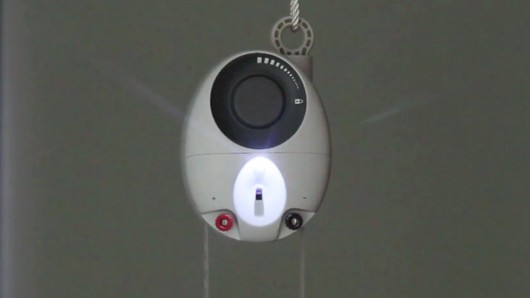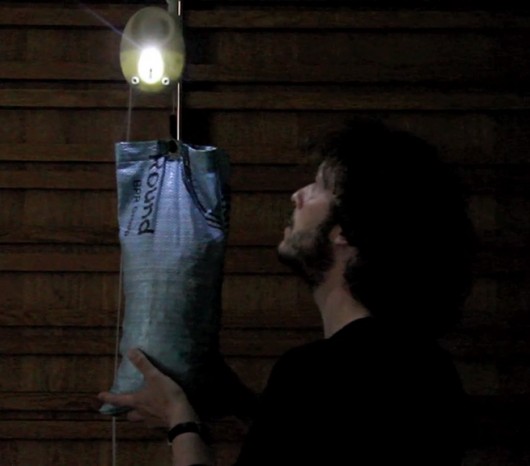GravityLight tackles weighty issue of lighting in the developing world
By Darren Quick
December 10, 2012

The GravityLight is designed to replace kerosene lamps in the developing world
With most of us in the developed world more concerned about the flow of electricity to power our computers, TVs and all manner of other wonders of the modern age, it’s easy to forget the massive impact resulting from one of the first widespread public uses of electricity – the humble incandescent light bulb. With a large proportion of the world’s population still lacking reliable access to electricity, the GravityLight hopes to bring the benefits of environmentally friendly artificial light to the developing world.
As the developed world makes the move to electrical lighting options more environmentally friendly than the incandescent bulb, the team behind the GravityLight says that around 1.5 billion people in the developing world still rely on kerosene wick lamps for lighting. A recent study by researchers at the University of California, Berkeley and the University of Illinois claims these kerosene lamps are even more hazardous to the environment and human health than previously thought – and they were already known to be pretty terrible.
After being challenged to develop a solar-powered LED lantern for villages in Africa, the creators of the GravityLight instead turned to a different power source that is freely available to anyone on the planet – gravity. They’ve turned to crowdfunding to get their idea off the ground.
The GravityLight is an LED lamp that works by harnessing the gravitational force exerted on a weight hanging from the lamp. One lift of a 20-pound (9 kg) weight, (which is formed by filling the fabric bag the light is delivered in with rocks or sand), generates enough power to provide 30 minutes of light with no need for rechargeable batteries or fuel, which means no running costs.
The unit has also been designed so that it can be used to power other devices, such as a radio, or recharge batteries, which can be connected to terminals on the front of the unit. The brightness of the GravityLight can also be adjusted based on the task at hand or to increase light running time.
The team hopes to get the cost to villagers of the GravityLight down to less than US$5, which would see them saving money after switching from kerosene lamps after a period of around three months.
They project is rapidly approaching its $55,000 funding goal, which will be used to tool, manufacture and distribute at least 1,000 gravity powered lights in Africa and India with the aim of improving the design and efficiency of the device based on actual use.
The team’s GravityLight video pitch can be viewed below.
Source: indiegogo via engadget
